
“They’re so dirty!”
“You can’t shoot those through a SIG P365!” (Yes you can.)
“Totally worthless for anything but shooting steel.”
There are so many myths and rumors out there about frangible ammunition it can be hard to keep track. That said, there’s a common thread among the things people say about frangibles on social media and in gun groups and it’s laced with lack of knowledge and experience. They believe frangibles cannot and should not be used for hunting or self-defense, that they’re only good for CQB work on steel, and that they might even – gasp – break apart in a gun’s barrel and cause massive destruction of some kind. It isn’t true, though. Not only can frangibles be used for hunting and self-defense, they should be. Keep reading to find out the hows and whys of the modern frangible bullet.
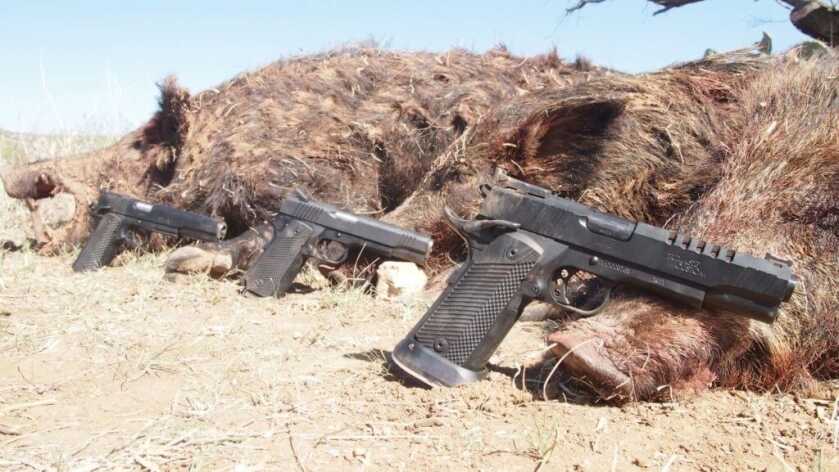
History Flashback
Interesting thing about bullets: they pre-dated firearms by centuries. In fact, two millennia back bullets were being used in battles (they were “sling bullets” cast from materials like clay and stone). Around the second century A.D., the Romans took sling bullets a step further by making whistling bullets. In order to make what were quite literally noise-making bullets, the Romans cast 1-ounce lead balls and drilled holes into their centers. That gave them bullets that whistled as they traveled, for a nice intimidating factor, and also projectiles that traveled at speeds up to 100 meters per second. Yes, that was fast considering they were not being fired from guns. The Romans were my kind of fighters, too; to make their whistling bullets even cooler they etched words on them like dexai which roughly translates to “take this” or “catch.” Now that we are well into the 21st-century, bullets have come a long way but I sort of wish they still had words inscribed on them.
Frangibles are often treated like some sort of new-fangled invention when, in reality, they’ve been around since the mid-20th century. If you dig back into past copies of the Shooter’s Bible – specifically the 1967 edition – you’ll find listings for Remington’s Spatter-Less and Winchester’s SpatterProof frangibles. Back then the ammo was used in shooting galleries, something we don’t have anymore. But just as shooting galleries have vanished, technology has advanced. The frangibles of the shooting galleries were far different from the frangibles of today.
Here’s the historical bottom line. Decades ago early frangibles were made using iron powder. That meant the bullets both penetrated more deeply than they really should and also that they were magnetic. Today frangibles are made using copper with a binding agent that is typically tin but does depend on the whims of the manufacturer. There is truly no comparison. These are not your grandpa’s frangibles. They aren’t even your dad’s frangibles.
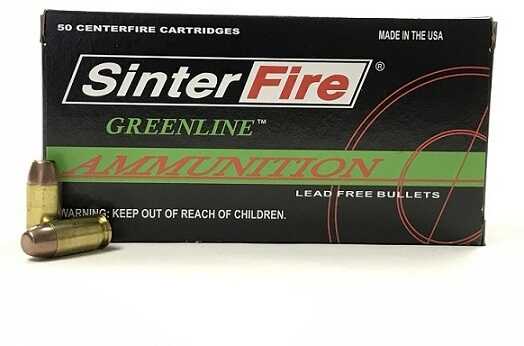
But Why
On the surface, frangibles serve a simple purpose: reducing or entirely eliminating the risk of ricochets and backsplash. Back in the days of shooting galleries, the idea was to use them for injury-free trigger time but now most people see them as belonging to close-range steel work. If you’re only using frangibles for shoot houses and close-quarters work, you’re missing the point.

Hunting with Frangibles
Yes, you can hunt with frangibles. I’ve dropped everything from 255-pounds hogs to antelope to deer using frangible ammunition. Just as with any ammo, it’s all about shot-placement; a single well-placed shot with frangibles is more than enough to drop an animal. In fact, I would argue frangibles get it done more efficiently than a lot of ammo. Heart shots I’ve taken with frangibles don’t just slice straight through like a hollow point, they’ve utterly obliterated the heart. Yes, that might be considered a downside if you like cooking heart – which I do, when possible – but it’s a huge plus because it drops the animal in their tracks. The deer haven’t bolted into the treeline and hogs haven’t simply squealed and kept on trucking. There’s also no over-penetration. Most animals I’ve shot with frangibles have no exit wound. I see that as a big upside.
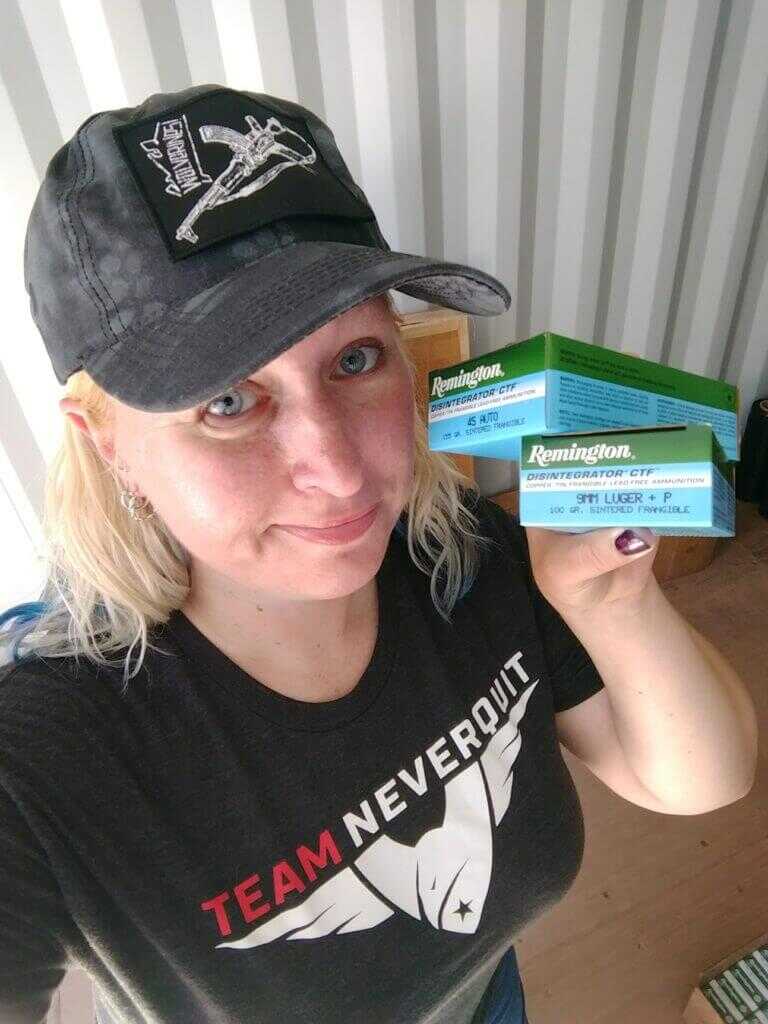
Self-Defense with Frangibles
Not only do a surprising number of gun owners believe you cannot hunt with frangibles but they shout from the gun range rooftops that you cannot and should not use frangibles for self-defense. You can, though. One reason I enjoy handgun hunting so much is that it gives me an idea of how particular ammunition will or will not perform for self-defense. Is an animal’s anatomy identical to a human’s? Of course not, but that doesn’t mean it doesn’t give you a fantastic baseline to work with. Hogs are my favorite thing for ammo testing and now that I’m into hundreds of hogs shot with frangibles from multiple manufactures in a broad variety of calibers, I’m sold. Yes, I use frangibles for self-defense.
In a self-defense situation, you are responsible for every shot fired. The instance of misses in self-defense shootings is high (it’s even higher in law enforcement). If that stray bullet misses its intended target, what do you think happens to it? It’s going to keep on going until it hits something capable of halting its movement. That could mean an innocent bystander gets hit or that a ricochet turns either injurious or deadly. Remember, frangibles powder upon impact with an object harder than themselves. Using frangibles does not remove your responsibility to train and to be responsible for every single shot fired but it does give you an edge for safety.
If you’re thinking you’ll only use frangibles when law enforcement does, guess what? Law enforcement does. There are LEOs and alphabet agents all over the world – both in the United States and outside it – using SinterFire and Inceptor frangibles.
And if you think frangibles cannot possibly be an effective bullet against an attacker, tell me how they perform so beautifully on such a wide variety of predators and game animals. It isn’t magic, it’s science, and they can and will halt a human threat just as well as they drop animals with one shot.
Not Equal
All frangible ammunition is not created equal. There are two manufacturers to consider trying if you’re in the market for frangibles: SinterFire and Inceptor. That does not mean there aren’t other good quality manufacturers out there – DRT Ammunition is another good one – but simply that some do have an edge for various reasons. There have been some random companies popping up here and there claiming to produce the latest-and-greatest frangibles but I have yet to be impressed with their ammo. Cue deluge of “but muh XYZ ammo” comments.

SinterFire supplies approximately 90 percent of the gun industry’s frangible projectiles. Remington and Fiocchi are two of the many, many major manufacturers using their bullets. When it comes to reliable cycling and precision, SinterFire won me over long ago and continues to win me over every time I use it. It’s well-made ammunition designed and produced by a team that knows what they’re doing and constantly strives to improve. The SinterFire team is also compromised of serious shooters who know their stuff which is an excellent bonus but really something that should probably be a requirement when it comes to designing ammo. Their ammo is non-toxic, green, and clean. It benefits from increased accuracy due in part to the lack of jackets, plating, or surface treatments to the bullets. SinterFire ammunition’s other benefits include reduced chamber pressure, decreased bore wear, and less fouling.
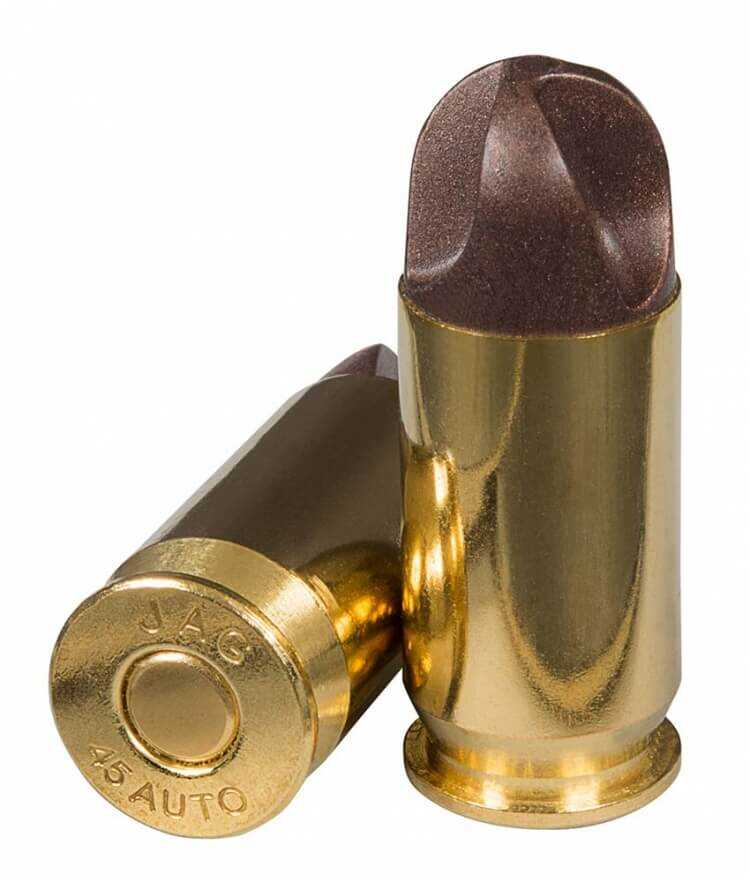
Inceptor is a frangible line that’s become better-known in recent years. It started its life as Polycase and was founded by former U.S. Army Airborne Ranger Paul Lemke back in 2012. Inceptor uses a precision injection-molding process for superior performance. Lemke states their goal is to produce innovative frangibles, unlike anything the industry has seen. They’re certainly readily-identifiable thanks to their being manufactured using a proprietary copper-polymer compound (Inceptor uses polymer as its binding agent, not tin). You might recognize their bullets by their chocolate-brown coloring and the twisted flute design of their noses. Their 10mm frangibles flat-out rock for precision and have been used by yours truly to drop dozens of feral hogs here in my home state of Texas.
Find out what works best for your needs in your guns. Just as with hollow points not all guns like all frangibles. That does not mean you should discount frangibles offhand, though. It’s good ammo and you’re missing out if you’re refusing to familiarize yourself with it.
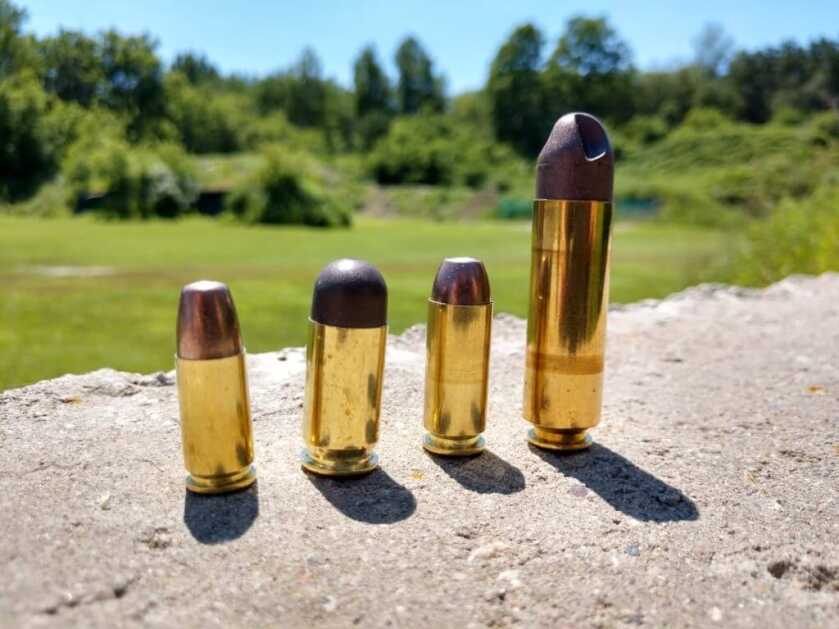
Excuses, Excuses
Most of the guys who speak up against frangibles have little to no experience with it. A lot of the negative talk is the result of the old mindset that frangibles cannot possibly work for anything but steel plates. Times have changed and it’s time you changed with them. And no, running a single box of ammo through your gun does not make you a frangible expert.
Years have passed since I first became interested in learning everything possible about frangibles – years and tens of thousands of rounds of ammunition – and I’ve learned quite a bit. I’ve also done extensive testing on ballistics gel, through chronographs, and on hunts. Then there are the countless models of guns of all platforms I’ve run frangibles through. The learning process takes time and effort. Do not dismiss or minimize something just because you do not understand it or because you were told something once by someone who may or may not know what on ammunition earth they are talking about. Take it upon yourself to do your own learning. It makes you a better shooter, a more well-rounded gun owner, and a far better conversationalist on related topics. (Shout-out to Keith Porco of SinterFire for his unending patience and willingness to answer what were likely repetitive questions over the years.)
Give frangibles a try, and then try them again. You’ll be glad you did. And if you’d like to argue about their efficacy, leave a comment below. Bring it on.


ZERO PICTURES…?
REALLY…?
…yawn
I put two water melons on the ground, shoot one with Hornady 200 gr +p the other with 165 gr frangible. The 200 gr blow out one side the exit hole was the same as the entrance hole. The frangible disintegrated the water melon. I carry the frangible know. Oh I shoot a 45 cap.
I like the less recoil from the frangible rounds in my Glocks but it won’t cycle in my Sig P365. Wouldn’t mind seeing something in .243 or 6.5 CM.
Surprised no one mentioned the fact that the Air Marshalls all load up with frangible ammo. Wait is that even a job anymore?
At PPD they may give us frangible at the indoor ranges in the precincts but at the range it’s fmjs and duty ammo is fed hst
More expensive with different weights, pressures, nose profiles, and velocities than the firearms were designed for, yet shot placement is still the most important factor. I’m not sure if this article is supposed to get people to switch ammo or add training.
Just kidding, this was sponsored, painfully obvious.
I believe there are special-use situations in both hunting and self defense, where the use of frangible ammunition can be both appropriate and effective. But I don’t see these bullet types replacing traditional, properly constructed expanding jacketed or monolithic bullets for general purpose use.
When frangibles work properly on game animals, the results can be spectacular. This can be the case in broadside shots on perfectly-positioned large animals, and in general use on small, varmint-sized targets, where bullet fragmentation is clearly desirable. But the less-publicized failures on big game are disconcerting, sometimes resulting in maimed and lost game. There’s an enormous difference in the demand placed on a bullet by a clean, broadside shot, versus a quartering shot that may require a bullet to break heavy bone, and/or penetrate twice the normal distance to reach the target’s vitals. In such situations, the bullet’s ability to stay together is critical, hence the great success and increased popularity of chemically-bonded jacketed or monolithic expanding bullets. There’s a good reason why we call bullet fragmentation “bullet failure” when discussing the performance of big game bullets.
The same is true for self-defense handgun ammo. A frangible bullet may produce a spectacular result on a lightly-clothed target that is hit straight-on in a vital area. But the likelihood of bullet failure through a barrier like auto glass, sheet metal, or other common materials is substantially increased, making their general-purpose use inadvisable. There is still no substitute for a well constructed, bonded, jacketed hollow point bullet, to perform well under the myriad of conditions that can and all-too-often do exist in real-world defensive situations.
There’s a place for frangibles in both rifles and handguns, in the specific and limited circumstances that make their use advisable. But they are a poor choice for general hunting or self-defense purposes.
I have first-hand experience (backed by info received from POF) that frangible, sintered ammo should not be run in certain firearms.
I purchased a thousand rounds of 7.62 frangible ammo for a training that I was subsequently unable to attend. So I decided I’d just burn the frangible ammo as training ammo. Shortly after beginning my first session, I noticed that the end of my 3-hole muzzle brake had broken off at the web connecting the end of the brake (i.e., the web that made up the edges of the last hole).
Having no idea what cause the problem (I thought that somehow a bullet must of hit the brake – a freak accident), I had the brake replaced with an identical model. And on my next outing, the end of the brake blew off again.
The gun was a POF P308, so I contacted POF and explained the problem (and sent them photos). I was told that POF bores are slightly polygonal. When a sintered bullet enters the bore, it is slightly crushed, and, when exiting the bore, can shatter explosively due to damage from its being crushed and the forces put on the bullet from its high rate of spin.
I replaced the brake again and, as before when shooting other types of ammo, didn’t experience the problem again and avoided shooting sintered ammo.
Lesson: Don’t fire sintered ammo in a gun with a polygonal bore.
Later I took an AR-15 (an LWRC) to a training and used sintered bullets without a problem.
I carry a 9mm Springfield Tac 9, with the 1st 5 rounds in the mag as ARX, if I have to stop something flesh and bone that will do it, if you do a little research on the round, you’ll see that while it is frangible the flutes cause large hydrostatic displacement in your fluids, of which make up about 80-90 % of your body mass. I introduced a friend to them and he shot a video that was awesome. He bought a bunch of watermelons about the size of a soccer ball and shot them with 9mm FMJ, result was 9mm hole in the front and an exit hole about the size of a playing card. He then shot some with the ARX, all that was left was a 9mm hole in a piece of the front about the size of that card. Hydrostatic Pressure. Another consideration, my daughter lives in an apartment, her 1st mag has 10 ARX, they won’t get into her neighbors unit.
WELL! I am here to tell you that all frangible stuff is FINE!
Obvious it seems to work well with pistols which honestly, I’d like to try as I am really good with one!
BUT I am also here to tell you that .223/5.56 ammo in Hollow Points… will do EXACTLY THE SAME THING!
I have the proof… hogs, deer, whatever… ONE SHOT… DROP like a ROCK!
First off, I rarely read articles, either in print or on-line, regarding firearms and/or related subjects anymore, especially articles related to tactical and/or personal defense issues. Also, I’ve never added to any comment sections. But the subject of this particular piece caught my attention.
I was employed as a LE officer for approximately 28 years with a fairly large agency (approx. 1,100 sworn) on the West Coast. But I’ve been “out of the mix” now for 17 years. The SWAT Team on my old department did have frangible ammo in it’s equipment inventory for limited applications, to include .12 ga. rounds for door breaching, plus 5.56 for our M4s and 9mm for our MP5s and sidearms. The standard rounds for the 5.56 was a 55 gr. JHP, and either a 147 gr +P+ JHP for the MP5s or a 127 gr. +P+ for the pistols. We did not utilize frangible ammo for the 7.62×51 sniper rifles, instead utilizing a 168 gr. JHP.
On a SWAT call out in 1995 we had what I believe to be the first use of a frangible round on an armed suspect by LE in the US. I was not on the team at the time, but I was assigned to our Homicide Unit, and was the lead investigator on the officer involved shooting team. I won’t go into all the particulars of the shooting, but I will say it was a single round into the upper chest cavity at approx 11 yards, traveling front to back and slightly right to left. The shot dropped the suspect in his tracks, literally destroying a portion of the right lung and the heart, and taking out approx. 2″ of the spine. The round did not exit.
Now, in all fairness, considering that the shot hit vital organs plus the spine, the results probably would have been similar if the suspect had hit with one of the “standard” rounds . If one of the “standard” rounds would have exited or not is difficult to say. But I can tell you that we had several officer involved shootings in which the 127 gr. +P+ 9mm pistol loads were used (most of the team used the +P+ loads as their regular duty ammo), and to the best of my recollection we never had a round exit from a shot that hit the torso or thigh.
Since this incident occurred 25 years ago the load involved would have been, as Ms. Ainsworth described them, one of “your dad’s” frangible rounds, and I am sure that there have been significant technological advances in frangible ammunition since then. But even 25 years ago frangible ammo was a viable anti-personnel round.
A number of those who have submitted comments brought up some valid points. In both US LE and military I am fairly confident that the use of frangible ammo is for the most part is limited to specialized groups or units. Frangible ammo is generally more expensive than standard JHP or FMJ ammo, and because of that isn’t going to be used in broader/general circumstances. My old team had frangible 5.56 and 9mm ammo in the inventory primarily because we had a large concentration of petrochemical facilities within our jurisdiction, and the idea of punching holes in pipes or tanks containing God knows what with stray rounds did not appeal to us.
As to the penetration of frangible ammo on intermediate barriers, we tried both frangible ammo and JHPs and FMJs on a variety of materials to include auto and plate glass, sheet metal (i.e. auto bodies), drywall with studs, etc. What we found is that you could not depend on any of the rounds to not deflect or fragment depending on the material involved, the angle at which the round struck the barrier, etc. There are no absolutes. During my career I responded to approx. 250 homicides (not all involving firearms) and I don’t know how many non-fatal shootings, so I’ve seen people shot with almost everything; and after having shot everything from ground squirrels to Cape Buffalo I can tell you that there are no magic bullets.
As Ms. Ainsworth brought up, shot placement is the single most important issue regardless of the type of bullet used. A stray frangible round can injure or kill a bystander just as easily as a JHP or FMJ. She also brought up an excellent point in that you may need to try multiple types of ammo in your weapon before you find one that functions reliably. But this is true with any variety of ammo, my Kimber Pro CDP II won’t feed some brands of JHPs worth a damn. In conclusion, even though my personal experience with frangible ammo is dated, frangible ammo in most cases is going to be a very viable option for personal defense, and one that can decrease the potential for over penetration in most circumstances.
While I have nothing against frangible bullets in general, I suspect that using them for defense against bears, for instance, is like coating oneself with honey, throwing rocks at a Grizzly sow’s cubs, and then limping along towards the bear shouting – in other words, almost certain to get you killed.
I have been using the Polycase/Inceptor/ now NovaX for 4 years. As stated some of my CC firearms do better than others with this ammo. In most cases you get at least 1/3 increase in velocity which I believe make up for the lighter projectile. I’ll take light and fast over slow and heavy. Just google a ballistic test on ballistic jell. Another big advantage is the weight reduction in your carry firearm as well as how clean it shoots. Basically all you are removing when cleaning is the remnants of powder. No lead fouling. Anything is better than nothing but I for one am sold and continue to carry this type of ammo without fear that it will not do what is necessary at the time it is called upon which is CQB self defense scenario.
So I have a porcupine and opossum problem. It’s about 25 yards from my patio sliding door to the deer/ birdfeeders. Those critters ,porky and possy do a lot of damage. 22 cb work ok- no not really.So I have an LCP on me at minimum all times. My “standard” in 380 ACP is Fiocchi FMJ. When diagnosing problems with the 380 for friends this ammo eliminates the cartridge as the culprit. It also sucks in stopping porky’s and possy. No big surprise there. Also I dont want hardball zinging around the neighborhood. So I handloaded some ARX 380. Now I’m not one to fall for the corkscrew hype. But the damage done to those critters is amazing. Hit em and they dont run off! But the LCP is not much of a precision hunting arm. Thinking about finding a contender pistol barrel in 380 and really see what it can do. Yeah I’ve I’ve got too much time on my hands.
Possible to use some of that time to work on making sense out of stuff you write?
Echoing what Joshooter stated above. Our church security team is always looking for a better way to put down a threat AND minimizing collateral injury.
It would be great to get some good balistics and gel data.
Good read. I would also like to see some gel testing.
Years ago, I bought several thousand frangible 9mm bullets that were alledged to be from sinter fire. They were on sale and very inexpensive. The first shipment I got had a lot of broken bullets, which may have been why they were so cheap. You cannot load them using traditional load data and the info I found on them stated that they needed be kept below a certain velocity.
There was a 5.56mm open tip load that was developed for certain US SOCOM units using a thin copper jacket with a frangible core. The load was developed to be a safe close quarters, limited penetration round. Very accurate within 100m and effective out to 200m. I am unsure if it is still in use today though.
I’m retired LE and worked in a gun store for sixteen years after that, retiring fully this year.
I would not use frangible bullets in a duty gun – a car door or a structure door frame would present an issue for needed penetration. Black Hills Honeybadger is the local LE round of choice. However, for personal carry I’ve used ARX Inceptors since they came out. Since the P365 came out that has been my carry. Excellent accuracy and one test on a live target.
My wife and daughter like to hunt coyotes. When they are both carrying rifles I just go with my normal carry pistol and run the call and decoy for them.
Last fall, while sitting to their rear and running the call and decoy, a coyote came from our right rear. Before it got out in front where they could shoot, it caught our sent, wheeled and ran. It ran about 20 yards to my right so I tied with my Sig. First round was too far back, but broke down the animal’s hips. The quick second hit was behind the shoulders and finished the coyote. The second round did exit, leaving a good sized exit hole.
If frangible rounds have such great terminal ballistics for self defense, why are they less deadly on non-target bystanders when the target is missed.
I’m retired LE and worked for 16 years in a gun store before fully retiring this year. Since ARX Inceptors came out I tested and then began using them in my carry gun – Sig P365 since those pistols came out.
I would not use them in a duty gun, were I still working. If an opponent were using a car door or the frame of a structure door, for cover, the ARX would not give me needed penetration. Black Hills Honey Badger the Law Enforcement round of choice in my area – and yes, over penetration is a hazard and concern.
However, for my personal carry, I exclusively use the Inceptors. If a lunatic had tried to rob our store, my over penetration or miss worries would have been lessened. Same in any home or urban situation.
My wife and daughter like to hunt coyotes. With them both carrying rifles, I often just pack my usual carry gun, the 365, with Inceptors and they do all the shooting. Last fall a coyote came in from our rear and, before it reached the decoy out in front of us, caught our sent, wheeled and ran. It was about 20 yards to my right when two Inceptors hit it. The first was too far back, in the hips, but immediately broke the animals hind quarters down. A fast second shot just behind the front shoulders finished the coyote. This round did exit, leaving a fair sized exit wound.
Wanting “first hand” experience, I cycled 2 boxes each, 380RNP through my wifes M&P Shield EZ Performance Center and 9mm Luger RNP through a Springfield EMP4.
380RNP: 12 FTE’s/Stovepipes!!! 9mm LUGER RNP: 6 FTE’s!!! Ammo looks good and Spec’s. sound too good. Back Pressure/Blowback issues? or 40 yrs of poor firearms abilities on my part? I am just a poor stupid working cowboy. But DEEP IN THE BEAVER MTNS I CANNOT EXPECT TO PROTECT MY FAMILY WITH AMMO THAT WILL NOT PERFORM IN EVERY CIRCUMSTANCE. GO NAVY…NEC5320…Combatant Diver,
UDT….SIR
No personal experience with frangibles but curious. What happens on impact with a shoulder bone or even the protective “plate” in a boar’s chest? Do you get good penetration?
Don’t have the actual web page but search in Youtube and you will find several videos of this type ammo in pork or other flesh examples as well as clay and other mediums.
Kat, I’m interested in any gel testing data you have. Particularly Inceptor 9mm reg and +P.
Recently purchased NovX 9mm, which is higher velocity than Inceptor, but I haven’t shot any yet.
They seem like a good choice to me, say for church service volunteer security, etc.
Simply put, how do these frangibles compare to quality JHPs in a given caliber in gel tests?
Not seeing much independent testing out there.
Go to youtube and search it. You will find multiple examples in test jell as well as animal flesh.
Didn’t see a lot on barrier blind performance of frangeables. Sometimes the meat gets behind something.
Personally, I’ve neither used nor considered frangible ammo, but your use on feral hogs is intriguing. I would suggest posting some ballistic gel videos/data to see what really happens at the human body level
Sorry, but I don’t agree that law enforcement really uses any frangible rounds. Sure there’s a few out there, but they I’d bet if you looked up actual statistics on this topic you’d see most don’t. Makes sense they should no doubt, I just find it hard to believe especially when tangible rounds are usually more expensive than cheap hollow points which is what they really use at best in most cases id bet.